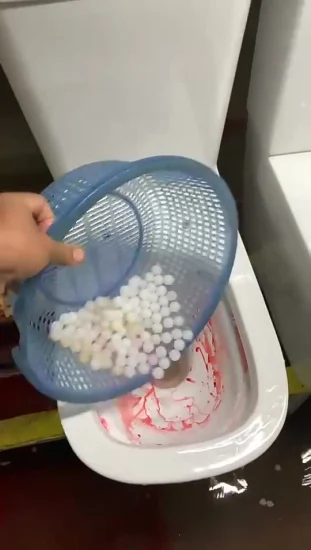Is it Safe to Flush Food in the Toilet?
Is it Safe to Flush Food in the Toilet?
Blog Article
Here in the next paragraphs you will find a good deal of good answers on the subject of Flushing Food Down the Toilet?.

Introduction
Many people are often confronted with the dilemma of what to do with food waste, specifically when it concerns leftovers or scraps. One common question that occurs is whether it's alright to flush food down the commode. In this article, we'll delve into the reasons that individuals might think about flushing food, the consequences of doing so, and alternate techniques for proper disposal.
Reasons that people could take into consideration flushing food
Lack of awareness
Some individuals might not understand the potential injury brought on by purging food down the toilet. They may erroneously think that it's a harmless practice.
Benefit
Flushing food down the commode may appear like a quick and simple service to taking care of undesirable scraps, particularly when there's no neighboring trash can readily available.
Idleness
In some cases, people may simply choose to flush food out of sheer idleness, without considering the repercussions of their actions.
Repercussions of flushing food down the bathroom
Ecological influence
Food waste that winds up in rivers can add to air pollution and harm aquatic ecological communities. Additionally, the water used to purge food can stress water sources.
Pipes issues
Flushing food can result in blocked pipes and drains, triggering costly pipes repair services and troubles.
Types of food that must not be flushed
Fibrous foods
Foods with fibrous structures such as celery or corn husks can get tangled in pipelines and cause obstructions.
Starchy foods
Starchy foods like pasta and rice can absorb water and swell, resulting in blockages in pipes.
Oils and fats
Greasy foods like bacon or food preparation oils need to never ever be purged down the commode as they can solidify and cause obstructions.
Correct disposal techniques for food waste
Using a garbage disposal
For homes furnished with waste disposal unit, food scraps can be ground up and purged with the pipes system. However, not all foods appropriate for disposal in this manner.
Recycling
Particular food product packaging products can be reused, lowering waste and lessening environmental impact.
Composting
Composting is an environment-friendly method to deal with food waste. Organic products can be composted and used to enhance soil for horticulture.
The value of proper waste monitoring
Decreasing environmental injury
Correct waste administration practices, such as composting and recycling, assistance reduce air pollution and protect natural deposits for future generations.
Securing pipes systems
By preventing the practice of flushing food down the bathroom, homeowners can stop costly pipes repairs and keep the integrity of their plumbing systems.
Conclusion
Finally, while it may be alluring to flush food down the toilet for convenience, it is essential to comprehend the possible consequences of this action. By adopting correct waste monitoring techniques and disposing of food waste sensibly, individuals can contribute to much healthier pipes systems and a cleaner setting for all.
THINK TWICE BEFORE FLUSHING FOOD DOWN YOUR TOILET IN FALLBROOK CA
Let’s be honest, we’re really supposed to be tossing rotten or leftover food in the compost bin or trash can. But many people like to place scraps of food down the drain of, say, their kitchen sink. That’s why the garbage disposal was invented: so we can continue to place certain foods down the drain without clogging our drain in the process. Smart.
But not all of us have the luxury of having a garbage disposal installed. So, you might continue to shove food down your sink drain anyway – or worse: you might flush them down your toilet! If you’re guilty of doing the latter, you’re going to want to stop, and here’s why:
Toilet Drains Aren’t Designed to Handle Food!
There’s your answer: food just doesn’t belong in your toilet. It may seem like your toilet drain is wider than the drains of your sinks, but truth be told, that isn’t actually the case. The narrower pipes of your toilet leave your plumbing at risk for clogging if you do happen to flush your food. In addition, food doesn’t break down as quickly that toilet paper and human waste do. In turn, this leaves your toilet at risk for a nasty clog.
Although a flush of a tiny pinch of food every now and then isn’t going to completely damage your toilet, there are certain foods that should absolutely not be flushed in your toilet at all. These include starchy foods like mashed potatoes, grains, hard pieces of food that are slow to break down, and fats and oils.
The latter categories of food are particularly problematic as they may harden, expand as they absorb water, break down slowly in your system, or generally create the perfect obstruction with their gelatinous composition. These are all things you don’t want in your plumbing system!
Experiencing a Toilet Clog?
Nobody’s perfect, and we all make mistakes. Sometimes one of the mistakes people make is flushing food down their toilet and later realizing that it wasn’t the best thing to do once they see that their toilet is now clogged. Uh-oh!

I discovered that write up on Flushing Food Down the Toilet? when doing a search on the search engines. Kindly take a moment to promote this entry if you enjoyed it. We truly appreciate your readership.
Check It Out Report this page